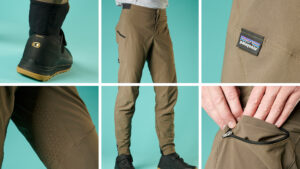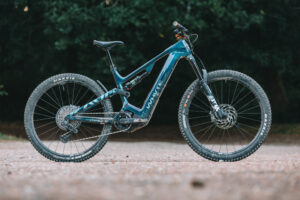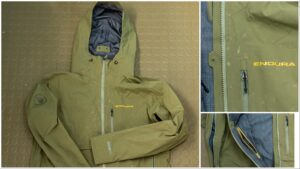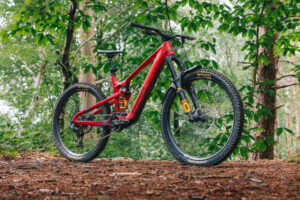The Trek Rail 9 is as rewarding to ride as it is easy to live with. Our E-Bike of the Year.
Trek Rail 9 (2021) electric mountain bike review

Editor’s Choice 2020
Launched in 2019, the Trek Rail largely flew under the radar, undetected by most of the mountain bike media, ourselves included. The reason for the distinct absence of reviews? Well, it wasn’t because Trek was unsure of its product, it simply didn’t have any bikes to send out to test because they were flying off shop floors at an unprecedented pace.
Thankfully we managed to get our grubby mits on one this year, and the timing really couldn’t have been better, the arrival of the burly RockShox Zeb fork and increased torque on the Bosch Performance CX motor providing the power and steering precision needed to keep the wheels on this 29er monster truck moving forward at a blistering pace.
Make no mistake though, the Trek Rail 9 isn’t just designed to plough. Thanks to its poppy suspension response and balanced geometry, it’s every bit as agile as it is capable on steep technical terrain. It’s beasts climbs too, the instant engagement of the Bosch motor giving you a friendly nudge if you stall, while the overrun of the motor, that briefly gives assistance when you stop pedalling, not only make it easier to get up and over big steps or fallen trees, it opens up lines that are simply impossible on a Shimano equipped e-bike.
Our E-bike of the Year test wasn’t just a willy waving contest about which bike was the longest, slackest or had the most power, even if Trek won on all fronts. It was also about the user interface and how easy the bikes were to live with. With Trek’s side mounted Removable Integrated Battery (RIB), with its integrated protective cover and handly carry handle you can swap batteries in seconds and charge the 640Wh powerpack on or off the bike. Providing, of course, you don’t lose the bloody key.

If Tonka did mountain bikes, we reckon they would look a lot like the Trek Rail 9. Pumped up in all directions, the Rail is like a two-wheel linebacker. With a head tube thicker than a rhino’s neck and a down tube with the diameter of a tree trunk. Somehow, though, it all looks entirely in proportion thanks to the 38mm stanchions of its RockShox Zeb fork and the generous sizing of the Alpha Platinum alloy frame.
Trek has taken a novel approach to battery removal and installation. Unlike most e-bikes, where the battery inserts through a hole in the underside of the down tube, Trek has cut a window in the side. This makes removing the RIB (Removable Integrated Battery) battery a breeze – no bending down, looking for keyholes and trying to catch it before it drops on the floor. The cover has been attached to the battery, so they both come out as one, and there’s even a carry handle at one end. The only criticism we can level at the Rail is that you still need to carry around a key to unlock the hatch.
Read more: Best electric mountain bikes – E-Bike of the Year
Trek has thrown its full arsenal of tech at the Rail: ABP, Mino Link, Knock Block, Straight Shot and Thru Shaft. And while these headline features are great sales tools, it’s little details like the hidden speed sensor, with magnet attached to the brake rotor, and Kiox display unit mounted to the top tube, that show the lengths Trek has gone to designing the Rail. The only hairline cracks in its armour are that the rear brake hose rubs on the seatstay, and that there are no stiffness-boosting Torque Caps at the front hub.

Thru Shaft Damper makes for supple, sensitive suspension
Suspension
There’s enough stiffness to the chassis of the RockShox Zeb that this minor omission is forgivable. It feels unflinching in every situation and this serves to amplify the rock-solid nature of the bike. Due to the larger air volume, pressures are relatively low – even for an e-bike – and this means one or two psi can make a big difference to the feel. In the end we added a third token to the air chamber to help cushion those big bottom-out events, but overall we felt like the Select+ Zeb had marginally less damping control towards the middle and end of the stroke compared to the Whyte’s Fox 38.
No such complaints at the rear however, where Trek’s exclusive F1-derived Thru Shaft damper (a RockShox Super Deluxe Ultimate) gave both excellent small bump sensitivity and generous mid-stroke support. The damping rod passes right through the shock body, so there’s no need for a pressurised internal floating piston to allow for oil displacement, and this creates a more sensitive damping circuit. We mostly ran the shock in the softest low-speed compression setting, but did find the middle position useful for raising the ride height slightly without eating into comfort levels too much.

160mm-travel RockShox Zeb fork is burly enough to take on any terrain
Components
Trek’s in-house Bontrager cockpit put us into the perfect attacking position, with the short head tube making it easy to get enough weight over the front end. The saddle rails on the Bontrager Arvada seat got bent in a crash, and the 170mm Bontrager Line Elite dropper post had noticeable play at full extension.
Although Trek has fitted a big 36t chainring, the SRAM GX Eagle drivetrain with its 52t sprocket ensured we never ran out of gears on the climbs, even if traction was in short supply from the shallow-tread of the stock Bontrager SE5 Team Issue tyres. Just about acceptable on dry trails, they don’t have the bite that a bike like the Rail demands, or deserves, in the soft conditions we typically see in the UK.

Kiox display unit is neatly incorporated into the top tube
Trek Rail 9 performance
Everyone who rode the Trek Rail 9 was impressed by how capable it is. With the Mino Links in the slack position, it boasts a 63.5º head angle that is comparable with its enduro race bike, the Slash. In fact, in a straight fight , it would be interesting to see which Trek would be fastest against the clock on a downhill track, because the Rail always remained utterly placid however nasty the terrain beneath its wheels. It really is a sledgehammer on the descents, yet it never feels too unwieldy at slower speeds, and although it takes a bit more effort and a more dynamic riding style to change direction than either the Whyte E-160 or the Merida eOne-Sixty, it still corners like it’s – you guessed it – on rails.
Trek hasn’t tried to achieve the shortest chainstay length, so with the steep effective seat angle, you’ve got a bike that’s just as capable up as down. And the instant response and addictive boost of the Bosch motor meant we had a ton of fun challenging ourselves on the most technical climbs.

What’s new for 2021?
Who knows what will change. But if anyone at Trek is reading this, the Trek Rail 9 needs better tyres as the Bontrager SE5s don’t have enough bite to transfer all of that power into forward movement in damp conditions. We’d also like a more user friendly controller for the Bosch Kiox display and possibly a hex bolt to replace the key to release the battery. All minor niggles that don’t distract for the stellar ride quality, so please don’t change anything else.
Verdict
The Trek Rail is as rewarding to ride as it is easy to live with. True, the Whyte E-160 nudges ahead by a few percentage points in terms of suspension performance, but the Trek beats it hands down for convenience, and yet never lets it get out of sight out on the trail. In fact, in terms of pure downhill speed, the Trek has so much stability that we were continually shocked just how fast we could ride it. The Rail dominates the descents and flattens the climbs, and in that respect it’s every bit as potent as the Slash, but with its own built-in uplift.















